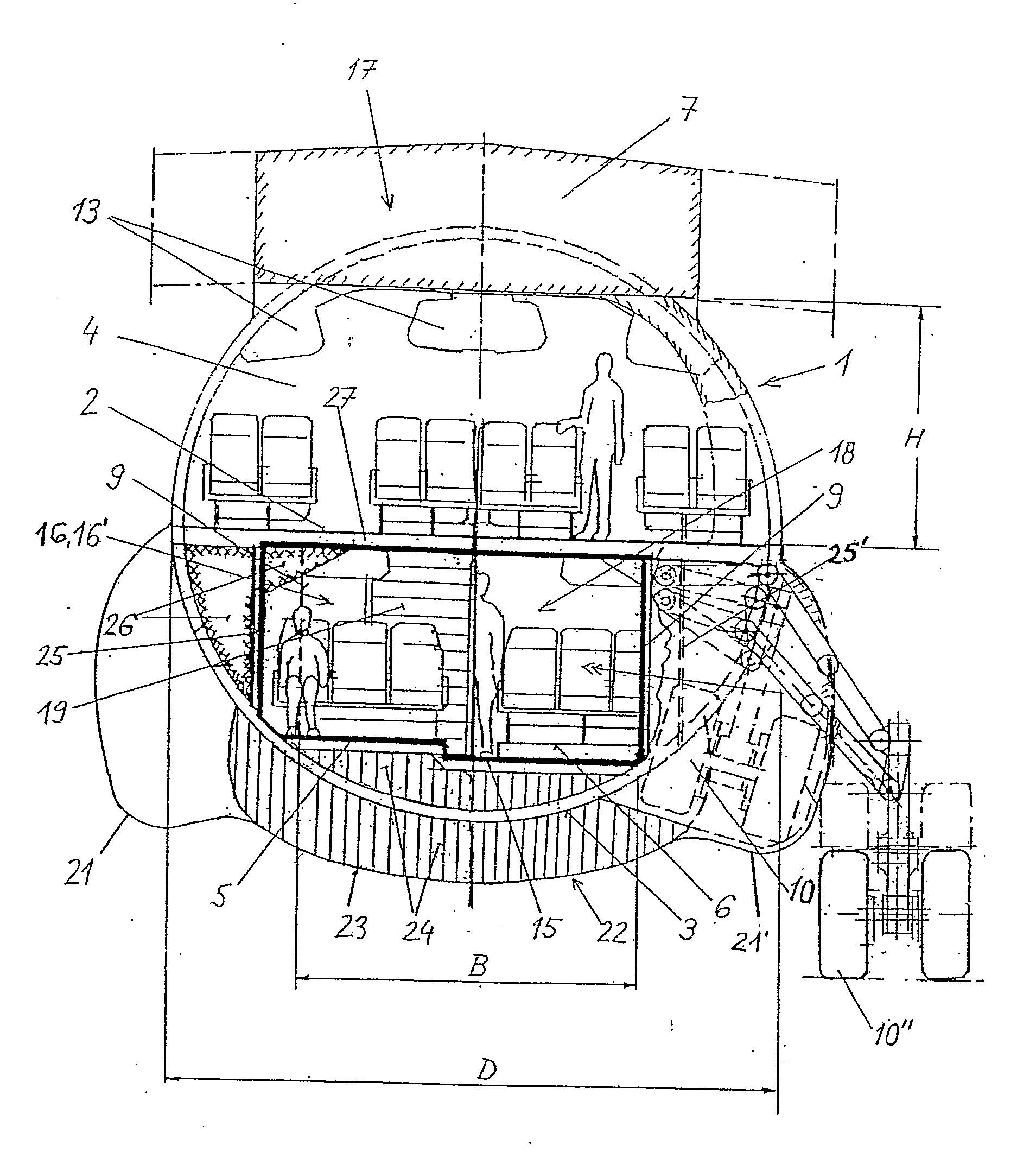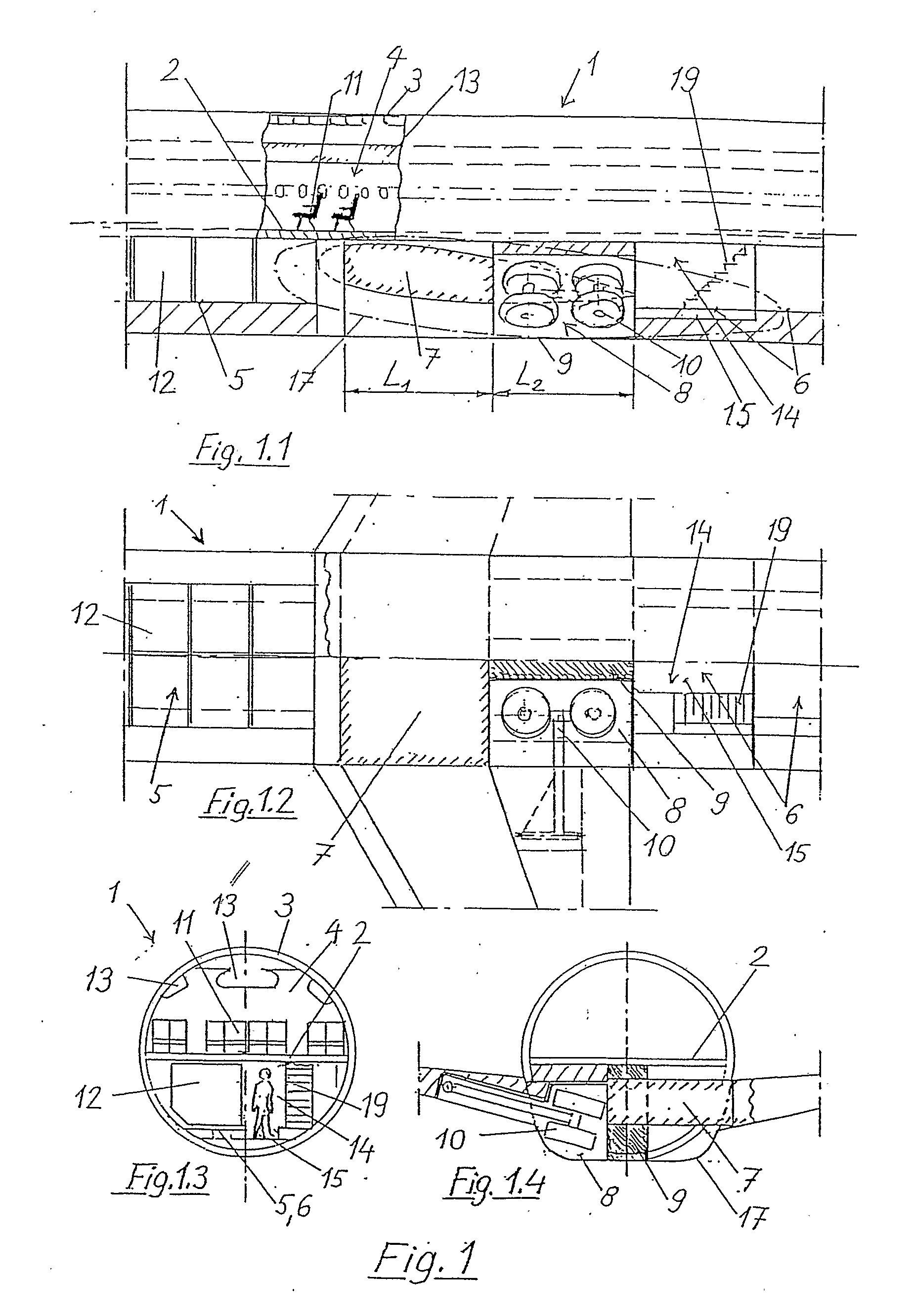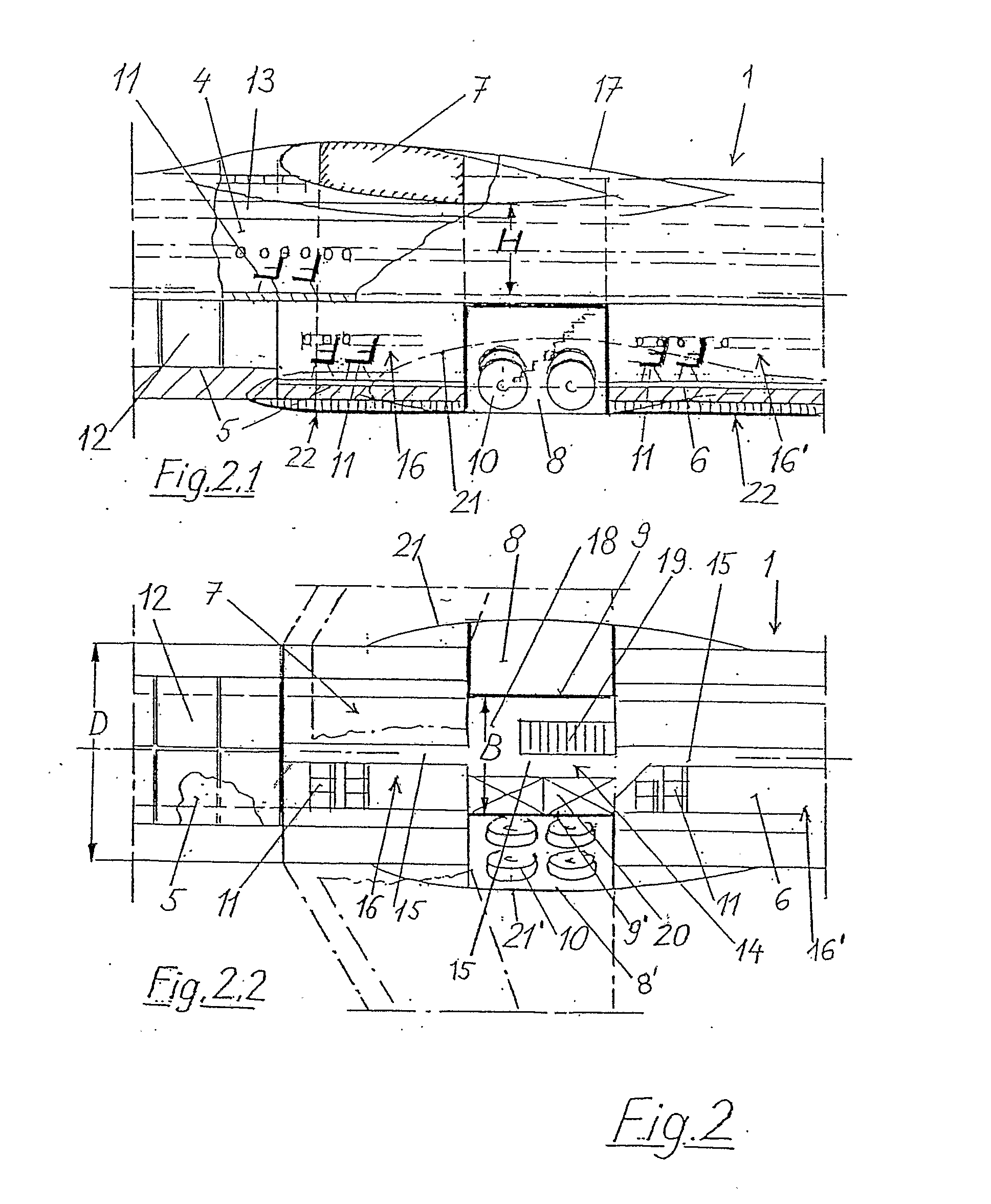Commercial Aircraft With a Main Deck and a Lower Deck
a commercial aircraft and lower deck technology, applied in the field of commercial aircraft, can solve the problem of larger cargo space on the main deck
- Summary
- Abstract
- Description
- Claims
- Application Information
AI Technical Summary
Benefits of technology
Problems solved by technology
Method used
Image
Examples
Embodiment Construction
[0016]FIG. 1 shows a conventional low-wing wide-body aircraft in the form of horizontal and vertical sections (FIGS. 1.1 and 1.2), as well as cross sections through the fuselage (FIGS. 1.3 and 1.4). A main passenger cabin 4 is essentially formed by the main deck 2 and the upper fuselage shell 3. A front lower deck 5 and a rear lower deck 6, as well as a wing torsion box centerpiece 7 and the landing gear bays 8, are situated underneath the main deck 2. A bottom longeron spar 9 lying between these landing gear bays reinforces the fuselage 1 weakened by the cutouts for the large landing gear bays 8. The bottom longeron spars 9 and the landing gears 10 require so much space that the rear lower deck 6 cannot be extended forward in this region. In practical applications, the length L1 of the lower deck required for the wing centerpiece 7 and the length L2 occupied by the landing gear bays 8 add up to a considerable total length. Since this section of the lower deck cannot be used for pay...
PUM
 Login to View More
Login to View More Abstract
Description
Claims
Application Information
 Login to View More
Login to View More - R&D
- Intellectual Property
- Life Sciences
- Materials
- Tech Scout
- Unparalleled Data Quality
- Higher Quality Content
- 60% Fewer Hallucinations
Browse by: Latest US Patents, China's latest patents, Technical Efficacy Thesaurus, Application Domain, Technology Topic, Popular Technical Reports.
© 2025 PatSnap. All rights reserved.Legal|Privacy policy|Modern Slavery Act Transparency Statement|Sitemap|About US| Contact US: help@patsnap.com



